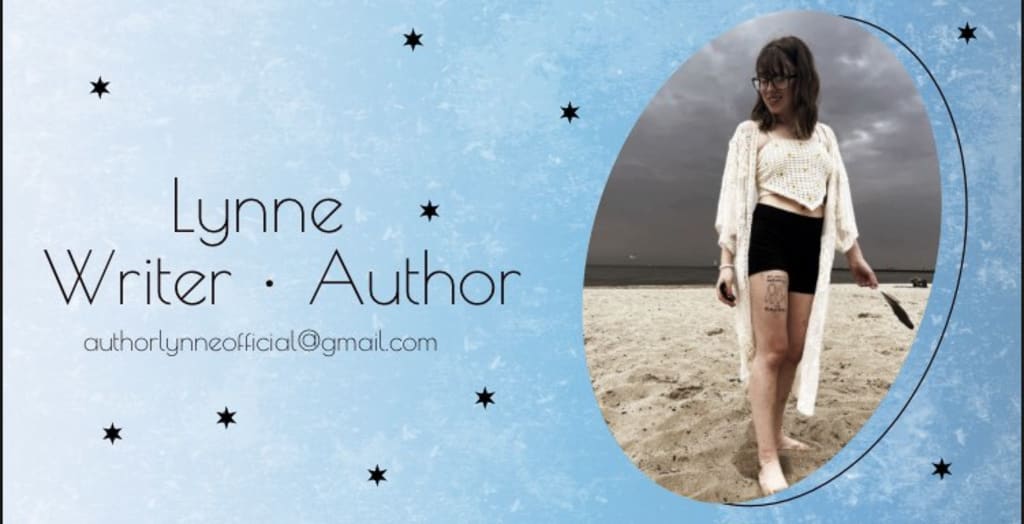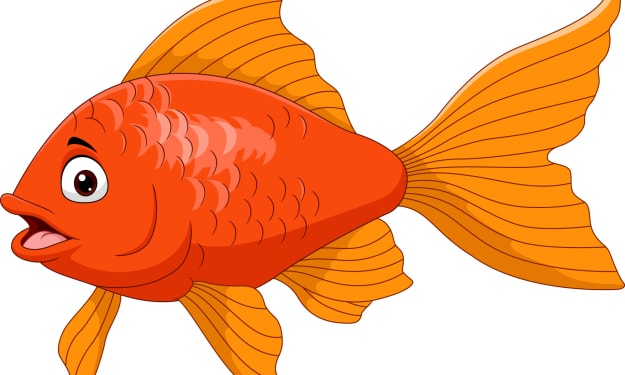Traditional Publishing VS Self-Publishing
Deciding what publishing method is best for you can be tricky...

When it comes to writing, it seems to be pretty easy. You write whatever your heart desires (be it a poem, a song, a novel of the sorts), and then you decide if you wish to publish it or not. If you decide to publish, you do a little bit of research, and maybe decide that you're stuck on what to do now that there are so many options in the publishing industry.
There are two methods of publishing: traditional publishing and self-publishing. Whereas they both are effective, they come with their own lists of pros and cons. With nearly nine years of researching behind me, I've compiled the lists for both options to make it easier in the decision making for other writers like myself. (Though, I am biased towards self-publishing!)
If a piece of work is self-published, it means that the author of the work owns the rights and the royalties to it. However, if a piece of work is traditionally published, the publisher then owns rights and royalties to it.
Since traditional publishing is the standard, and once upon a time was the only option for publishing, we're going to go over that side of the publishing industry first.
When deciding to publish the traditional route, there are steps that you need to follow to get to where you want to be.
The first step is securing an agent with a query letter. When looking at agents, it's important to remember that not every agent handles every genre. To have a higher chance of an agent accepting you as their client, look for agents who are familiar with the genre your piece of writing falls under. Submitting your query letter to an agent who works with Fantasy genres may not be likely to accept your writing that is in a Thriller and Suspense category. You may get multiple rejections before securing an agent, but don't give up.
The second step is to secure a publisher with your manuscript. After you and your agent have gone over and perfected your manuscript, it's time to send it to publishers. When sending it to publishers, one (or more, who knows what could happen!) of them will send contracts for you to go over and sign. The contract will highlight everything you need to know, and by this stage it may be a good idea to have a lawyer or someone similar go over the contract with you to make sure that you understand exactly what it is that you are signing.
The third step in the traditional publishing method is to agree to the publishing contract if it is offered! Look at you go! You're nearly there, buddy!
The fourth and final step is that the publisher you signed with will buy the rights to your book from you, and they will publish it at no cost to you. From here, it is probably a good idea to start telling people about what you created! Post release dates, and maybe even links where people can go to buy your work. Spread the word because you finally did it!
Even though traditional publishing has been the standard in the publishing industry for years upon years now, it still comes with it's own lists of pros and cons. It's important to know all of the details before you decide what would be best for you.
PROS OF TRADITIONAL PUBLISHING
1. There are less upfront costs for the author, in this case, you. The publisher handles all of the production expenses, making it more budget friendly for authors who want to publish. This is one of the more appealing aspects to those who do decide to go with traditional publishing, due to the fact that they don't have to budget and move money around to get to where they want to be.
2. There is less responsibility for the author in traditional publishing. You write the book, and your publisher will handle everything else from formatting, to editing, to design.
3. There is more credibility and validation for the author. Since the publisher is usually a big publishing house, they have more credibility and are able to get your books into major book stores such as Barnes & Noble, Books-A-Million, Second & Charles, and many others. That's where the validation for the author comes in, they feel as though their hard work truly paid off. (And it did!)
However, every pros list will have a cons list.
CONS OF TRADITIONAL PUBLISHING
1. Traditional publishing is extremely competitive. With that being said, the chances of getting published the traditional way are very slim. It's also extremely difficult to be accepted by a publisher, and it doesn't help that they have hundreds of inquiries a day. In a way, traditional publishing houses are gatekeepers.
2. With traditional publishing being extremely competitive, it also has a lot of rejection within it. You are more likely to get a rejection letter than you are an acceptance letter, which can be disheartening to authors who have a story that needs to be told. This is usually one of the factors that others use when decided which method they would like to go.
3. With the publisher buying the rights to your work, you have less creative control. Essentially, the publisher can now make changes to your work that they see fit, even if it isn't exactly what you had pictured in your mind. It can be edited, formatted, and designed without your input.
4. With traditional publishing, there are less earnings than you could get if you were to self-publish. Typical royalty rate with traditional publishing houses is 10-15%, whereas self-publishing royalty rates are significantly higher.
Do not let the cons of traditional publishing deter you from choosing the side of the publishing industry if it is what you feel fits your wants and needs the most. Everyone gains success differently!
With traditional publishing being the standard method in the publishing industry, it hasn't stopped the rising-star from becoming widely known: self-publishing. It is a newer concept, and has it's own set of pros and cons just as traditional publishing does.
Where the traditional side has a list of steps to do before you start the publishing process, self-publishing has one as well, though its slightly different:
1. The first step in self-publishing is to write, finish, edit, and perfect your piece of work. However many times you edit is completely up to you, some people may never go back and edit while others will edit almost one hundred times. (And they may have only stopped at one hundred because someone else forced them to, their work is perfected.) When editing, be sure that you format your work as well.
2. The second step in the self-publishing process is optional, but highly recommended almost everywhere you look: copyright and ISBN. myidentifiers.com offers both of those services, though they are more on the higher end of payment. I say that this step is optional due to the fact that most self-publishing services will generate you an ISBN to use with their website. However, copyrighting your work is still highly suggested.
3. The third step is to publish your work through a self-publishing service. Today, there are many options for you to choose from such as Barnes & Noble Press (B&N), Kindle Direct Publishing (Amazon), Draft2Digital, and even more.
4. Finally, you need to market your work, and it's always a good idea to start this as early as possible. You want people to know about your work, so tell the world!
With self-publishing becoming more and more appealing to new authors, along with authors who were previously traditionally published, it's important to go over the pros and cons list.
PROS OF SELF-PUBLISHING
1. No gatekeepers! The only person standing in the way of your work getting out there is you, rather than a publishing house who may not have even looked over your work thoroughly.
2. You get to have complete creative control. No one is telling you what you can and cannot do, nor how your work should look so that it fits in with what is currently popular. You get to decide how it is edited, formatted, and designed.
3. There is a better chance for higher earnings. While traditional publishing royalty rates are typically 10-15%, self-publishing royalty rates can be anywhere from 60-75%, allowing you to make more money when you own the rights and royalties to your work.
4. You get to make your own timeline with your work. You decide your own deadlines, and what you do and do not do at a certain time. You are also able to get your book to the markets quicker than the traditional publishing method.
As I said before, every pros list will have a cons list to match it, and self-publishing is no exception.
CONS OF SELF-PUBLISHING
1. There is less support on the self-publishing side of the industry. Everything will fall into your hands from editing, marketing, formatting, to publishing. This can be scary for authors, and without a supportive community behind you, it can also be very lonely.
2. Even though getting to make your own timeline is a pro, it is also a con. You don't have anyone pushing you to get your work done, which can lead to long periods of time procrastinating rather than getting done what you should be. You also have to be sure that you are setting realistic goals for yourself, and not overworking yourself to the point of getting burnt out.
3. Even though you are now in complete control of your work with self-publishing, this also means that there are more up front costs for the author. Some may pay for someone else to edit their work, create a cover design, advertise, etc. You may even choose to buy ISBNs if you need them, which can cost up to 1,500.00$ (Though, the cheapest option is to buy 10 ISBNs for 125.00$!)
Do not let the cons of self-publishing deter you from using this publishing method if you feel it is what fits your wants and needs the best!
4. Another con of the self-publishing side is that there are stigmas around it. Self-published authors are often considered the underdog, or not as important, as authors who are traditionally published. Though, regardless of that, traditionally published authors have started to choose to self-publish!
Trying to decide which method to publish your work with can be scary, especially if you don't know what you should be looking for. Even though there are way more pros and cons for traditional publishing and self-publishing, I only wanted to highlight a few that are usually the deciding factors when someone is making the choice between the two.
Reedsy, Writers Write, Scribed, Writer's Digest, and many other websites also have similar lists, and even highlight other pros and cons of both sides in the publishing industry. It may be scary when you decide to publish, but know that you aren't alone and there are thousands of others who have the same questions that you do.
About the Creator
Lynne
Indie Author
YA Fiction Author
NA Fiction Author
Enjoyed the story? Support the Creator.
Subscribe for free to receive all their stories in your feed. You could also pledge your support or give them a one-off tip, letting them know you appreciate their work.






Comments
There are no comments for this story
Be the first to respond and start the conversation.